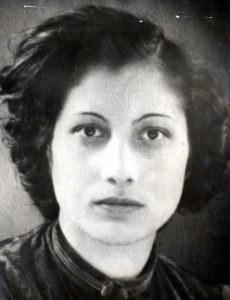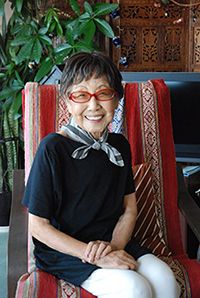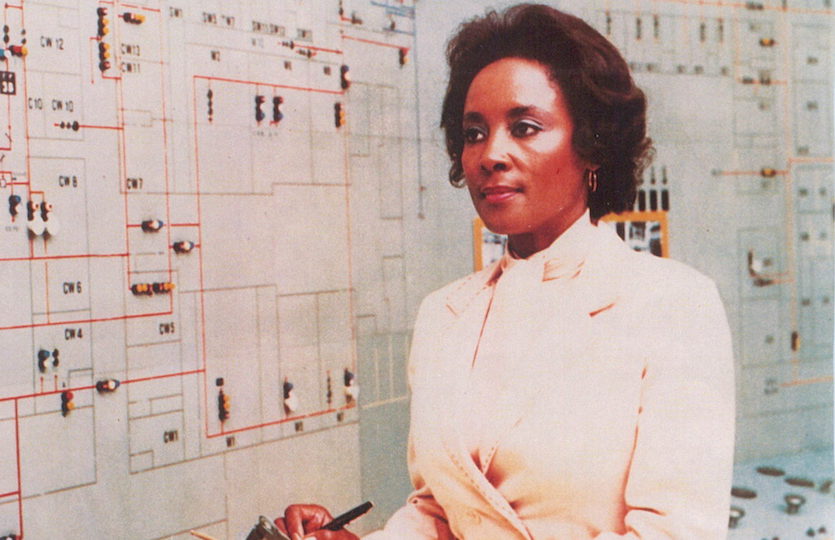For the rest of the month, we’re taking the time to honor and empower women around the world, past and present, to better cultivate future female role models. Arguably, in recent years, society has developed a growing awareness of influential and powerful women in different parts of our lives. This is thanks to an increased role of feminism and social activism within the mainstream culture and media; a progressive development which we must support.
As women and men alike continue to fight for gender equality, let us remember the women in our past who made a mark on the world, and helped bring about the changes we are seeing today. The following four women are distinguished and proud reminders of the capabilities of women, and how women deserve to be recognized equally alongside their male counterparts.
Noor Inayat Khan
 Noor Inayat Khan was a British spy in World War II. Khan was born to a Muslim Indian father and an American mother. She was deeply influenced by her father’s Sufism and identified herself as a pacifist. Prior to the war, she was a poet, a children’s book author, a musician, and was described as being quite a “dreamer”.
Noor Inayat Khan was a British spy in World War II. Khan was born to a Muslim Indian father and an American mother. She was deeply influenced by her father’s Sufism and identified herself as a pacifist. Prior to the war, she was a poet, a children’s book author, a musician, and was described as being quite a “dreamer”.
These characteristics certainly would be obstacles to her future profession as a spy, but when the Nazis invaded France, she fled to Britain with her family. It was during this time that something changed, and she felt the necessity to fight.
Noor Khan joined the British Special Operations Executive and was sent to Paris as an undercover radio operator with the codename “Madeleine”. However, the spy operation in Paris was usurped, leaving behind Khan as the sole radio operator. Nevertheless, she chose not to leave and for the next five months, she evaded the enemy and transmitted important messages to British Intelligence.
Eventually, due to a double-agent, Khan was captured, but she did not give up the fight. She made two escape attempts, which earned her a classification of “highly dangerous” from the Nazis. Although Khan was tortured and interrogated, she refused to cooperate with her captors.
Khan was later executed in the Dachau Concentration Camp, her last words were said to be: “liberté.” Khan was posthumously awarded the George Cross, one of only three women to receive the award, and was honored with a statue in London for her bravery and commitment.
Tsuneko Sasamoto
 Tsunkeo Sasamoto is hailed as Japan’s first female photojournalist. Born in 1914, she is still alive today, at 101 years old and has no plans of stopping her photography practice.
Tsunkeo Sasamoto is hailed as Japan’s first female photojournalist. Born in 1914, she is still alive today, at 101 years old and has no plans of stopping her photography practice.
Sasamoto started her photojournalism career at 25 when a friend saw potential in her and offered her the opportunity. Despite the fact that she had never taken a photograph, Sasamoto had an interest in painting, which had drawn the interest of her benefactor. Her father was already disapproved of Sasamoto’s art, so she knew that he would be supportive of her photojournalism career… if she told him.
Initially, Sasamoto kept her profession a secret, despite the extraordinary situations in which she sometimes found herself. She is known for capturing pre-war and post-war Japan. She also photographed General Douglas MacArthur and his wife, the Hitler Youth, the immediate aftermath of the bombing of Hiroshima, famous poets, actors, politicians, and more.
However, Sasamoto’s favorite subjects were women. “These were independent, strong women who broke all the molds,” she said of the extraordinary women of the Meiji era. Time and again, she was drawn to capturing the presence of influential women, with curiosity and admiration of their strength.
Sasamoto admitted that despite her fears of witnessing and confronting the realities of the world, she felt obliged to do so, saying: “Even though I’m scared I still want to go; I don’t want to see it, but I do. I want to capture this world that we live in and show it to people who aren’t aware.”
Annie Jean Easley
 Annie Jean Easley was one of the first African Americans to work for the National Advisory Committees for Aeronautics, the precursor of NASA, during the mid 20th century. At the time, society was riddled with racism, ranging from segregated schools to literacy tests for voting. Nevertheless, these arduous conditions did not stop Easley from pursuing (and excelling) at her studies.
Annie Jean Easley was one of the first African Americans to work for the National Advisory Committees for Aeronautics, the precursor of NASA, during the mid 20th century. At the time, society was riddled with racism, ranging from segregated schools to literacy tests for voting. Nevertheless, these arduous conditions did not stop Easley from pursuing (and excelling) at her studies.
Born in Birmingham, Alabama, Easley became a valedictorian in her school, which allowed her to go to Xavier University, where she majored in Pharmaceutical Studies. However, when she moved to Cleveland with her new husband, she found that she could not continue her education.
Then, one morning, Annie read in the papers about twin girls who were Computers for the NACA. At that time, Computers were not electronic machines — they had yet to be invented — but people, who performed the calculations the scientists needed.
Easley applied for the role and was accepted, thus began her long career within the organization. She began as a Computer, transitioning the role of Math Technician when the electronic computing devices were introduced. It did not take long for Annie to master the new technology, and she quickly moved on to become a Computer Programmer. Her prowess in her field would eventually earn her the position of Rocket Scientist.
Annie Easley became best known for her work on the Centaur Project, a high-energy rocket that launched the Cassini probe to Saturn, for which she helped develop the software. The software she developed laid the foundation for future spaceflights. Her motto, especially with dealing with racism, was: “If I can’t work with you, I will work around you. I was not about to be so discouraged that I’d walk away.”
María Félix
 María Félix was an icon in the Golden Age of Mexican cinema. Born in Mexico, Félix had become famous for proud and stubborn attitude in her community. As she grew of age and into her beauty, Mexican movie directors took notice and started to cast her.
María Félix was an icon in the Golden Age of Mexican cinema. Born in Mexico, Félix had become famous for proud and stubborn attitude in her community. As she grew of age and into her beauty, Mexican movie directors took notice and started to cast her.
The film that launched her career was Doña Bárbara in which she played La Doña, a woman who ran her own ranch, wore men’s clothes, and dabbled in witchcraft. From then on, the public affectionately called her “La Doña,” and the roles she starred in afterward were similar to her famous character. An independent and confident female character was not only what she was known for but it was who she inherently was.
She built her career first in Latin America, then received the attention of Spanish, French, and Italian film directors. The whole world was enamored with this strong woman. Painters, writers, musicians, fashion designers, and many others were inspired by her beauty and used her as a muse and model. The incredible part was that in her entire career of 47 films, she never was filmed or photographed nude.
Internationally, she was considered to be one of the most gorgeous and beautiful women of that time. Félix received many offers to star in Hollywood films, but she refused and here are a few proposed reasons as to why: 1) She wasn’t inclined to learning English and 2) the roles Hollywood offered her were stereotypical roles, like a Native American “Indian” or a foreign Latina “spitfire.” She supposedly said, “In my country, I can play the role of an [Native American] Indian. In foreign lands, I play the role of a queen.” And slay, this queen did.

